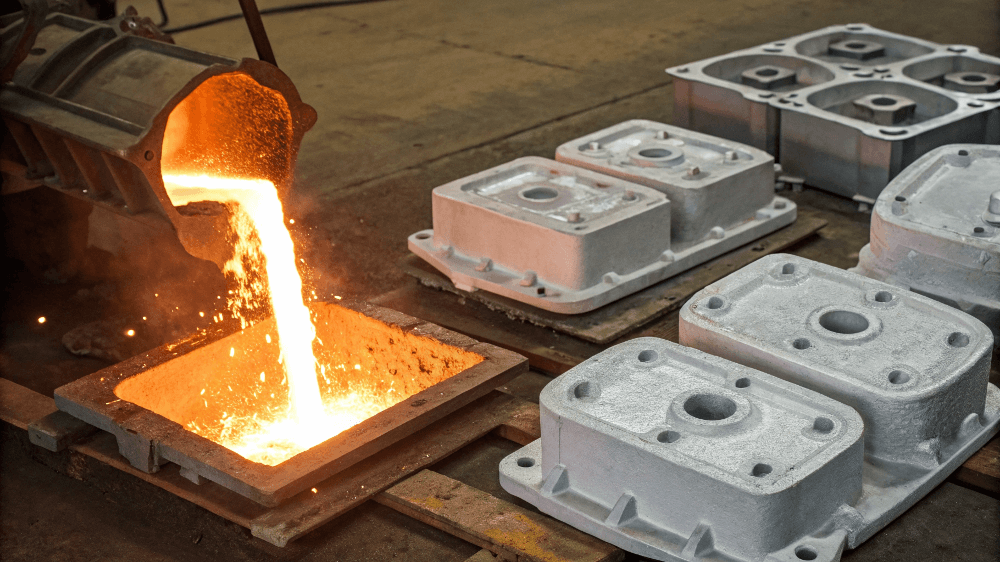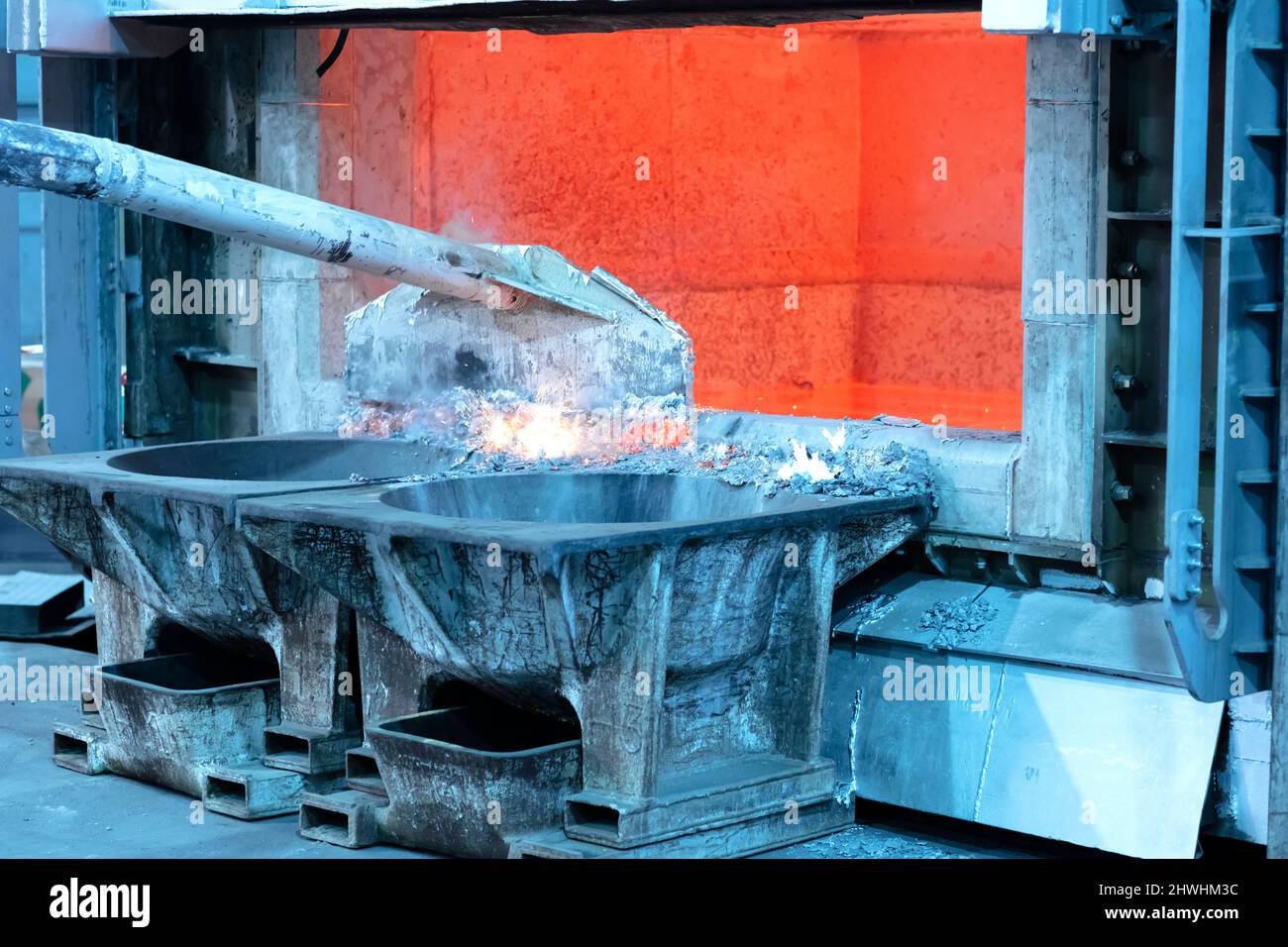The value of Aluminum Foundry Wisconsin in casting projects
How Aluminum Foundry Adds To Improvements in Aerospace Design
Aluminum foundries are indispensable to advancements in aerospace design. They create lightweight, high-strength parts that are necessary for modern airplane. With sophisticated spreading methods, these shops produce complicated geometries that improve structural honesty. In addition, the development of superior Aluminum alloys sustains the sector's concentrate on fuel efficiency and sustainability. However, obstacles continue to be in the manufacturing process. Recognizing these variables reveals the profound effect of Aluminum on air travel's future.
The Relevance of Lightweight Products in Aerospace Style
As the aerospace market remains to progress, the relevance of lightweight materials becomes significantly noticeable. The demand for effectiveness and sustainability drives engineers to prioritize the usage of materials that minimize general weight without endangering structural stability. Light-weight products, particularly Aluminum, play a necessary duty in boosting fuel efficiency, boosting payload ability, and raising the general performance of airplane.
The assimilation of these materials allows for cutting-edge styles, enabling producers to create more wind resistant shapes that can endure extreme conditions. The reduction in weight not just decreases functional expenses but also adds to a decreased environmental impact, lining up with worldwide efforts towards sustainability in aeronautics.
Advanced Spreading Techniques in Aluminum Foundries
Advanced casting strategies in Aluminum factories play a crucial role in aerospace engineering by enabling the manufacturing of light-weight and exact parts. Advancements in mold and mildew layout and accuracy casting processes are crucial in achieving ideal performance and structural honesty. In addition, the development of light-weight alloys boosts the total effectiveness and performance of aerospace applications.
Cutting-edge Mold And Mildew Design
Cutting-edge mold and mildew layout plays a necessary function in the efficiency and effectiveness of Aluminum factories, specifically within the aerospace sector. By leveraging sophisticated products and techniques, modern-day mold and mildews can be engineered to endure heats and pressures, guaranteeing peak efficiency throughout the casting procedure. These layouts commonly incorporate complicated geometries that permit the manufacturing of light-weight yet structurally audio components, necessary for aerospace applications. In addition, using computer-aided layout (CAD) software application assists in precise modeling, enabling factories to replicate and improve mold and mildew designs before physical production starts. This not only boosts the quality of cast components but additionally lowers waste and lead times, resulting in substantial price savings. Generally, innovative mold and mildew layout is a cornerstone of progress in Aluminum Foundry innovation for aerospace design.
Accuracy Casting Processes
The performance of innovative mold designs seamlessly incorporates with precision casting procedures, which are crucial for producing top notch Aluminum components in aerospace design. These processes, including sand casting, die spreading, and financial investment casting, ensure the creation of intricate geometries with tight tolerances. Advanced strategies like vacuum spreading and pressure die casting boost the integrity and surface coating of the final items. Precision spreading decreases product waste while optimizing the mechanical residential properties of Aluminum, vital for aerospace applications. Furthermore, using real-time monitoring and progressed simulation devices throughout the casting procedure permits for instant adjustments, leading to boosted quality assurance. Collectively, these precision casting processes placement Aluminum factories at the center of aerospace development, sustaining the market's demand for reliability and performance.
Light-weight Alloy Growth
As aerospace designers look for to improve gas performance and performance, lightweight alloy advancement becomes a vital focus in Aluminum factories. These factories use innovative spreading methods to create alloys that provide premium strength-to-weight proportions. Innovations in alloy make-up, consisting of the unification of components like lithium and magnesium, enable the manufacturing of products that endure extreme conditions while reducing general airplane weight. Strategies such as die spreading and investment spreading assist in the precision manufacturing of intricate forms, which are essential for aerospace applications. In addition, recurring research study aims to optimize these alloys for enhanced mechanical buildings and boosted resilience. By prioritizing light-weight alloy growth, Aluminum factories greatly add to the development of aerospace engineering, paving the way for more reliable and lasting airplane layouts.

Enhancing Structural Honesty Via Aluminum Elements
Aluminum parts provide substantial benefits in enhancing architectural honesty within aerospace engineering. Their lightweight nature adds to total performance while keeping toughness, which is crucial for aircraft performance. In addition, the anxiety resistance residential properties of Aluminum help guarantee the sturdiness and integrity of aerospace structures under different functional problems.
Lightweight Product Benefits
While conventional products commonly endanger weight for stamina, using Aluminum parts in aerospace engineering supplies significant advantages in structural honesty. Aluminum's lightweight nature adds to overall layout performance, permitting more streamlined aircraft that eat much less gas, thereby boosting sustainability. The material's superb strength-to-weight proportion warranties that elements preserve sturdiness without adding unneeded mass. This quality promotes improved performance and dexterity in flight, along with enhanced payload abilities. Additionally, Aluminum's resistance to corrosion lengthens the life-span of aerospace structures, minimizing maintenance expenses and boosting safety and security. As suppliers significantly adopt Aluminum alloys, the aerospace industry experiences a transformative shift in the direction of extra reliable and reliable engineering services that focus on both performance and ecological obligation.
Tension Resistance Features
Although navigate here various products possess distinct buildings, Aluminum's outstanding anxiety resistance sticks out as a crucial factor in enhancing the architectural integrity of aerospace components. This resistance plays a critical role in ensuring that airplane can stand up to numerous functional tensions, consisting of exhaustion, impact, and environmental problems. Aluminum alloys, specifically engineered for aerospace applications, display high tensile stamina while keeping lightweight characteristics, making it possible for engineers to create extra reliable structures - Aluminum Foundry. Additionally, the ability of Aluminum to sustain cyclic loading without considerable contortion adds to the longevity and integrity of aerospace components. As advancements proceed in Aluminum Foundry techniques, the growth of stress-resistant Aluminum parts guarantees further enhancements in efficiency, security, and efficiency across the aerospace sector, solidifying Aluminum's role as a preferred material in modern design
Fuel Performance Improvements Driven by Aluminum Innovations
As the aerospace market seeks to improve gas performance, innovative uses Aluminum have actually become an important solution. Aluminum's light-weight nature significantly decreases airplane weight, enabling lower gas usage during trip. This reduction in weight is crucial, as also small declines can cause considerable improvements go in total fuel economic situation.
Advanced Aluminum alloys, designed for improved strength and sturdiness, enable manufacturers to create elements that maintain structural honesty while lessening mass - Aluminum Foundry. Additionally, the assimilation of Aluminum in airframes and engine elements promotes enhanced the rules of aerodynamics, adding to minimized drag and boosted efficiency
The adoption of Aluminum in aerospace not only meets the need for fuel-efficient design however additionally lines up with governing pressures for lower discharges. As these developments remain to develop, they play a considerable function in establishing new criteria for fuel effectiveness, ensuring that the aerospace sector can satisfy growing environmental and financial obstacles.

The Function of Aluminum in Sustainable Air Travel Practices
The increasing emphasis on sustainable air travel methods has actually placed Aluminum as a crucial product in the pursuit for greener airplane style. Recognized for its light-weight buildings, Aluminum substantially minimizes airplane weight, causing reduced fuel usage and discharges. Its recyclability further enhances its sustainability account, as Aluminum can be reused indefinitely without loss of quality. This characteristic sustains a circular economy within the air travel industry, reducing waste and resource deficiency.
Additionally, improvements in Aluminum alloys have boosted their toughness and corrosion resistance, permitting longer solution life and decreased maintenance requirements. These advancements help with the growth of a lot more reliable airplane frameworks, adding to total sustainability initiatives. In addition, Aluminum's thermal conductivity plays a critical function in energy-efficient layouts, enhancing systems such as warmth exchangers. Jointly, these characteristics emphasize Aluminum's critical duty beforehand sustainable air travel, lining up with international efforts targeted at minimizing the environmental effect of air travel.
Difficulties Dealt With by Aluminum Foundries in Aerospace Production
While Aluminum shops play a vital role in aerospace manufacturing, they deal with significant difficulties that can affect manufacturing efficiency and high quality. One significant obstacle is the strict quality assurance standards required in the aerospace industry. Any type of issue can jeopardize security and efficiency, demanding rigorous examination processes that extend production timelines. In addition, shops commonly compete with fluctuating resources expenses, which can impact rates and success. The complexity of Aluminum alloys utilized in aerospace applications additional makes complex the production procedure, as exact solutions are critical for achieving wanted mechanical residential or commercial properties. In addition, knowledgeable labor scarcities prevent the capacity to maintain top quality production levels. Finally, environmental regulations enforce constraints on exhausts and waste management, requiring shops to buy lasting methods, which can be cost-prohibitive. These variables jointly produce a landscape where Aluminum shops have to constantly adjust to satisfy the progressing demands of aerospace manufacturing while making sure safety and compliance.
Future Trends in Aluminum Applications for Aerospace Design
With innovations in technology and boosting demands for performance, the future of Aluminum applications in aerospace engineering is positioned for considerable change. The integration of cutting-edge Aluminum alloys and composites is anticipated to improve strength-to-weight proportions, resulting in even more fuel-efficient aircraft designs. Furthermore, developments in additive production strategies will certainly enable for the manufacturing of complicated Aluminum structures that were previously difficult, optimizing efficiency and minimizing waste.

Lasting practices will certainly play a crucial role, with an expanding focus on recycling Aluminum to decrease ecological influence. The aerospace sector is likely to accept smarter making procedures, such as automation and expert system, ensuring better and precision in Aluminum parts. Cooperations in between Aluminum shops and aerospace firms will certainly cultivate study and growth, leading the method for new applications that satisfy the strict demands of contemporary aerospace design. On the whole, the future looks assuring for Aluminum's role in shaping the skies
Frequently Asked Concerns
What Are the Environmental Impacts of Aluminum Manufacturing in Aerospace?
The ecological influences of Aluminum production in aerospace include considerable energy consumption, greenhouse gas exhausts, and habitat disruption. Additionally, mining procedures can cause soil degradation and water contamination, raising concerns about sustainability and environmental balance.
How Does Aluminum Contrast to Other Materials in Aerospace Applications?
Aluminum offers an unique mix of light-weight homes, corrosion resistance, and cost-effectiveness contrasted to other basics products. Its high strength-to-weight proportion makes it specifically beneficial for aerospace applications, enhancing fuel efficiency and total performance in airplane style.
What Qualifications Do Aluminum Foundry Workers Requirement for Aerospace Projects?
Aluminum Foundry workers require specific training in metallurgy and spreading strategies, together with expertise of aerospace market standards. Accreditations in quality assurance and safety and security methods are additionally necessary to ensure compliance with rigid aerospace job demands.
Are There Any Type Of Safety Problems With Utilizing Aluminum in Aerospace Design?
Security worries concerning Aluminum in aerospace engineering include sensitivity to deterioration, exhaustion, and stress and anxiety cracks. Proper treatment and alloy choice are necessary to mitigate these risks, making sure structural stability and general safety and security in aerospace applications.
Exactly How Does Aluminum Recycling Advantage the Aerospace Sector?
Aluminum reusing considerably benefits the aerospace market by lowering material expenses, lessening ecological effect, and preserving energy. This lasting technique enhances the industry's efficiency while advertising making use of lightweight, high-performance parts in aircraft production.
Advanced spreading techniques in Aluminum factories play an important function in aerospace engineering by making it possible for the production of exact and light-weight parts. Cutting-edge mold and mildew layout plays an important function in the performance and effectiveness of Aluminum foundries, particularly within the aerospace market. As aerospace designers look for to improve gas performance and efficiency, light-weight alloy growth becomes an essential emphasis in Aluminum shops. Aluminum alloys, especially engineered for aerospace applications, exhibit high tensile toughness while preserving lightweight characteristics, making it possible for designers to create a lot more effective structures. Collaborations between Aluminum factories and aerospace companies will certainly promote research and growth, paving the means for new applications that satisfy the strict needs of modern aerospace engineering.